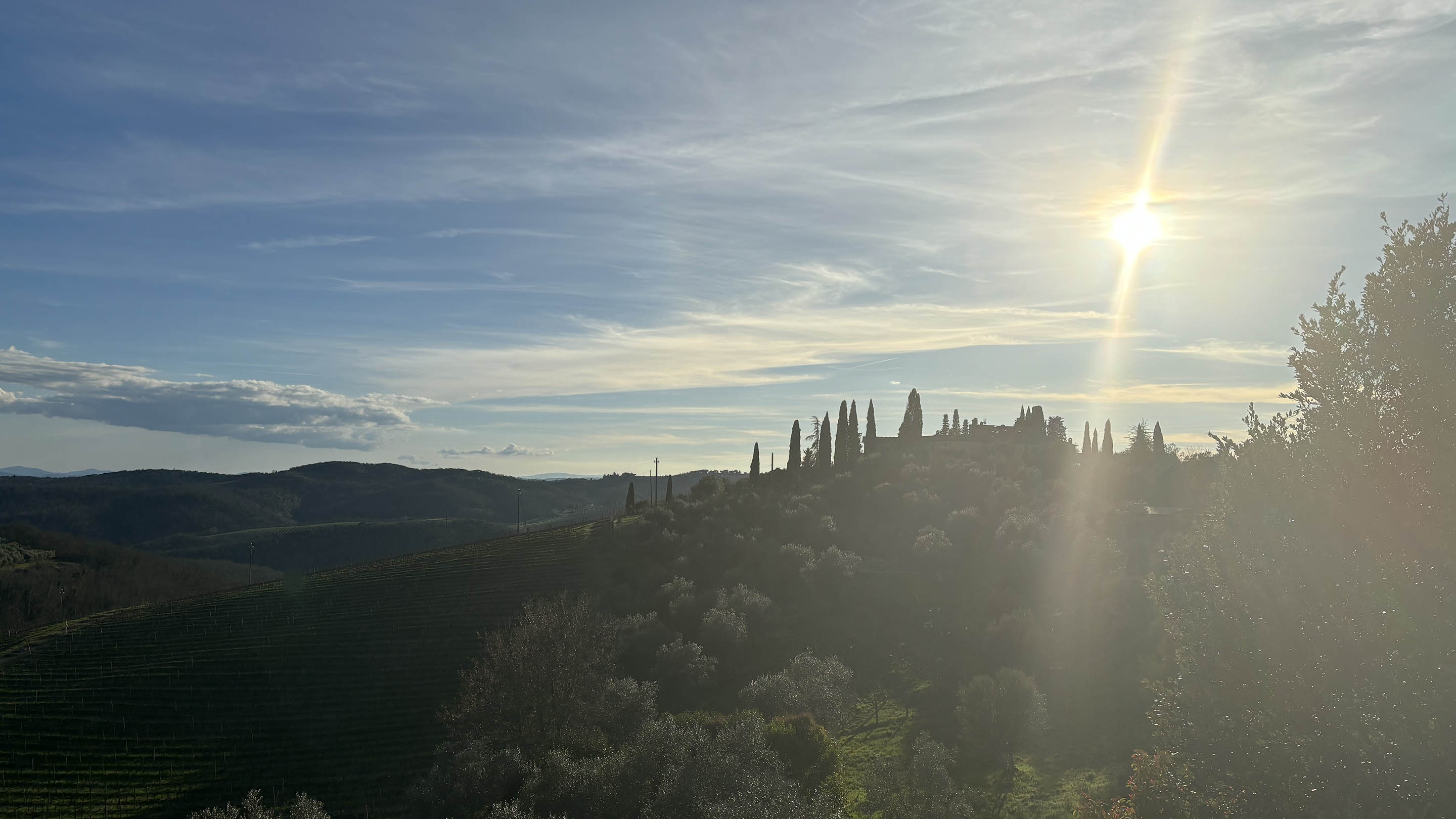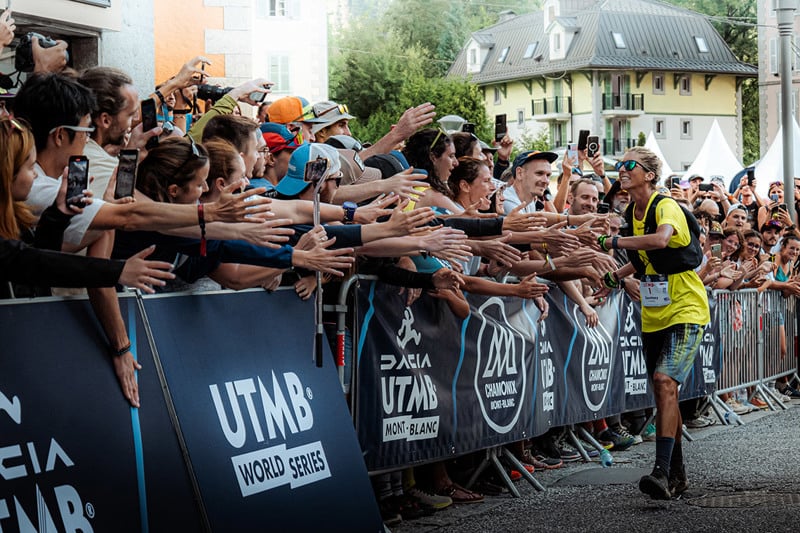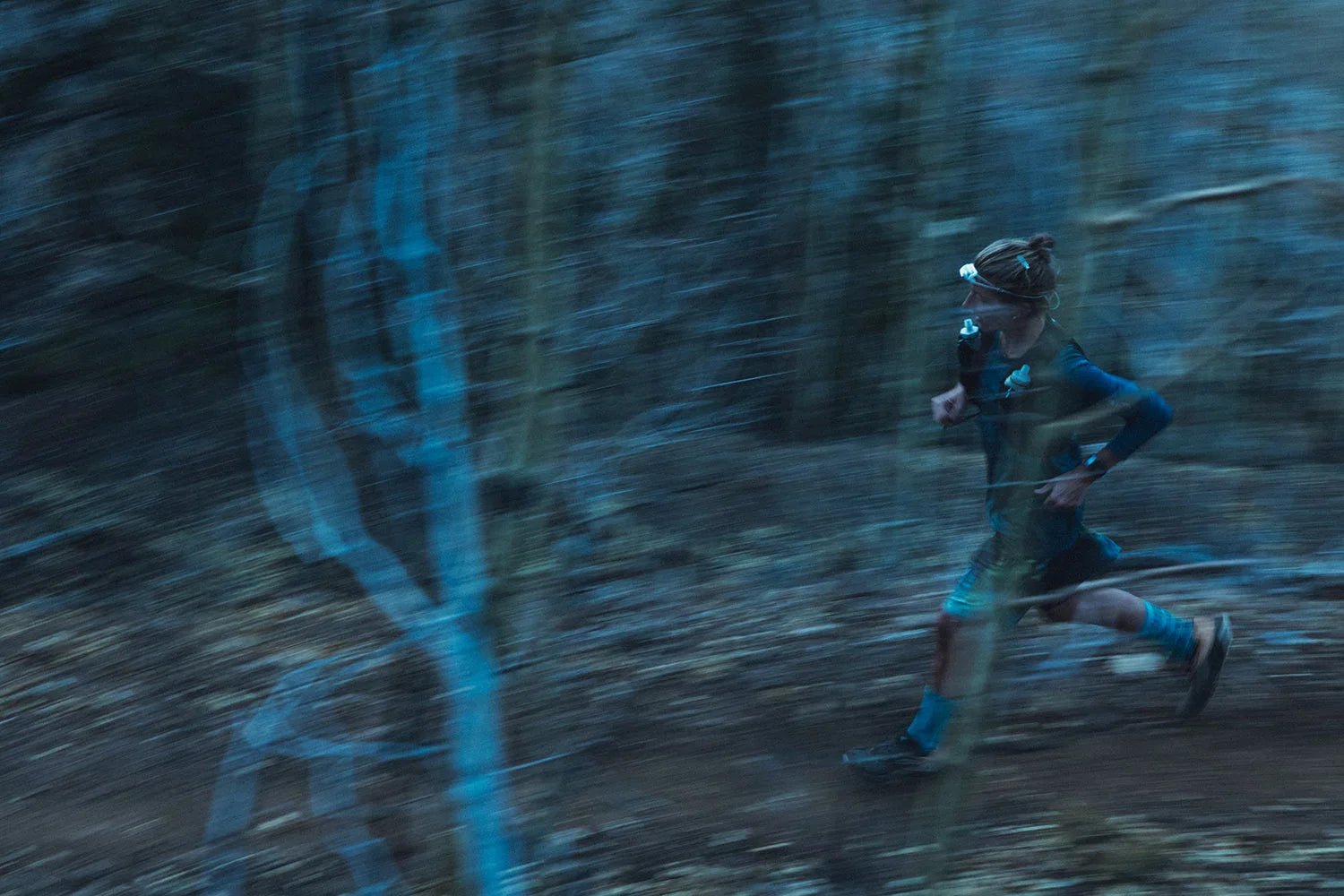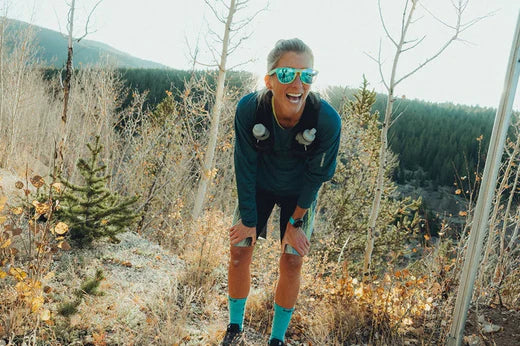

Suunto Blog

Chianti Ultra Trail by UTMB
The trail running season is finally starting again! The first unmissable event is the Chianti Ultra Trail by UTMB, taking place from March 20 to 23.
The 2024 edition was a record-breaker, with over 3,600 participants from 72 nations and more than 10,000 visitors over the three thrilling days of races.
© Jose Miguel Munoze
What makes this event truly special is its unique setting: the Chianti hills — candidates to become a UNESCO heritage site — renowned for their stunning natural beauty, medieval villages, vineyards, and forests.
The races unfold amidst this breathtaking landscape, once again attracting athletes from around the world.
Our Suunto athletes are ready to give it their all, including Italians Andreas Reiterer — last year’s winner of the most challenging race, the Ultra Trail Chianti Castles (120 km and +5200 m of pure passion and talent) — alongside Davide Cheraz and Mattia Bertoncini. Also competing are Ugo Ferrari and Alban Berson (FR), Dominika Stelmach (POL), Tomas Farnik (Czech Republic), and Abby Hall and Ryan Montgomery (USA).
Suunto will be at the event village with a booth, where our team will be happy to share the latest brand news and showcase our products.
But that's not all — join the COMMUNITY RUN in collaboration with Näak! Experience the thrill of running 5 km through the Chianti hills and enjoy a snack at the end of your workout.
Community Run Program — Saturday, March 22
14:30: Departure from the Suunto booth
5 km route through the Chianti hills
15:30 (approx.): Arrival at the Näak booth
Post-run snack with Näak products and soft drinks
Register now and don’t miss this unique opportunity to test one of our sports watches during the run!
Sign up

Suunto partners with the UTMB World Series
Sharing the same passion for sports and the outdoors, UTMB® World Series and Suunto, known for their world-renowned GPS multisport watches and training tools, have announced a global partnership, that will see the two companies work together to contribute to the positive development of trail running and help individual runners reach their goals.
Suunto have supported adventurers since 1936 and have been involved in trail running since its inception. Their legacy in the sport is enriched by a strong team of elite runners, including UTMB Mont Blanc winners Courtney Dauwalter, Francois D’Haene and Pau Capell. Suunto watches feature award-winning design, industry-leading battery life, reliability, and purpose-built features for training and racing.
As Official GPS Watch and Technical Partner of the UTMB World Series, Suunto will support runners in navigating the trails and achieving their dreams across the 41 UTMB World Series Events, by bringing its heritage and experience with GPS sports watches. Athletes with a Suunto Vertical or Suunto Race watch can download intuitive GPS maps in three different map styles with important landmarks, contour lines, water, paths and different sorts of terrain highlighted. Maps are available for each UTMB World Series Event, whether you are running the 100K CCC® (Courmayeur-Champex-Chamonix) in the European Alps, the 50K Kodiak Ultra Marathons by UTMB in California, the 100M Black River Peak race in the sugarcane fields for Mauritius by UTMB... or any other race of the circuit.
Frédéric Lénart, UTMB Group CEO, said:
“We are delighted to join forces with Suunto who has over 80 years’ experience in creating products that runners can rely on in the most extreme conditions. With Suunto becoming Technical Partner of the UTMB World Series, we will enable runners to live adventure that stays with them forever, helping them to take the first step and keep on moving.”
Hannu Korpivaara, Suunto Brand and Marketing Director, said:
“We firmly believe that collaboration empowers companies, communities, and individuals to evolve. It fosters relationship-building, innovation, and effective problem-solving. We are honored to partner with the UTMB World Series and to connect with all the runners out there. Together, we aim to contribute to the positive development of trail running and help individual runners reach their goals.”
The 2024 UTMB World Series kicks off this month with the Tarawera Ultra-Trail New Zealand by UTMB from the 17-18 February. This inaugural event of the year welcomes trail runners of all abilities and promises unforgettable moments in the most stunning scenery of Rotorua.
About UTMB® World Series
UTMB® World Series is the world’s ultimate trail-running circuit that unites the sport’s biggest stars and passionate runners through the best, leading international events in the most stunning locations. Built on a passion for the mountains with sustainability at its heart, UTMB® World Series gives all trail runners the chance to experience the UTMB® adventure across the world, with events taking place across Asia, Oceania, Europe, Africa, and the Americas. It is the only place where runners can begin their quest to Dacia UTMB® Mont-Blanc, France, where the prestigious UTMB® World Series Finals will be held. Launched in May 2021 through the collaboration between the UTMB Group and The IRONMAN Group, the UTMB World Series circuit brings together many of the best international trail-running events on the planet.
For more information, visit https://utmb.world/.
About UTMB Group
Since the creation of Dacia UTMB® Mont-Blanc in 2003 by a group of passionate friends, UTMB Group has been the driving force behind the development of trail running. The Dacia UTMB® Mont-Blanc is the sports pinnacle event, and every year, 10,000 runners earn their place on the start line. UTMB Group also pioneered the LiveTrail® technology, an innovative digital service that supports the management of endurance races. Revered by hundreds of thousands of athletes, UTMB® has become a global, premium, and leading brand. In May 2021, UTMB Group partnered with The IRONMAN Group to launch the UTMB® World Series, now in its second year, which brings together many of the best international events on the planet to provide exclusive access to the sport’s pinnacle event, Dacia UTMB® Mont-Blanc. The UTMB® World Series is built on the founding principles of Dacia UTMB® Mont-Blanc: surpassing oneself; fair-play; respect for people and the environment; and solidarity.
Find out more at https://utmb.world/.
About Suunto
We stand for adventure. Pioneering has been in our DNA since 1936, when Finnish orienteer Tuomas Vohlonen invented a more accurate and reliable compass. Today, Suunto is at the forefront of design and innovation for sports watches, dive computers, compasses and digital services used by adventurers and athletes around the world.
Since 2022 we have conducted cradle to grave Life Cycle Assessments (LCA) for our new watch models to understand their environmental impact and to help us improve our ways of working. The remaining emissions we offset with Verified Carbon Units.
We pride ourselves on the fact that Suunto products are not only robust, but also have an everyday aesthetic that reflects our Nordic identity. Suunto's headquarters and own factory are located in Vantaa, Finland.
Find out more at apac.suunto.com

Getting started with ZoneSense: Your guide to smarter training
Have you tried Suunto ZoneSense yet? This article will help you get started with the breakthrough innovation in tracking real-time exercise intensity.
In endurance training, finding the right workout intensity is key to getting the best results. Many athletes wonder if they’re training too hard or not hard enough. Heart rate zones have been used to estimate intensity, but they don’t account for changes from one day to another, across different activity types or during long workouts.
Now, Suunto ZoneSense offers a breakthrough in tracking real-time intensity. It uses heart rate variability (HRV) to give accurate insights, helping athletes optimize their performance like never before.
All Suunto users training with a heart rate belt can unlock ZoneSense intensity analysis through the Suunto app. For real-time data, ZoneSense is available on the latest Suunto watches – Suunto Vertical, Suunto Race, Suunto Race S, Suunto Ocean, and Suunto 9 Peak Pro.
Step 1: Learn how to get started with Suunto ZoneSense. All you need is a Suunto sports watch, a Suunto heart rate belt and the Suunto app on your phone.
Step 2: Learn how to use Suunto ZoneSense in real-time, during an activity.
A great way to get started is by following ZoneSense during a long, easy endurance workout. Begin with a 10-minute warm-up that allows ZoneSense to establish your baseline for the day, then keep your effort in the green zone.
Step 3: Learn how to view Suunto ZoneSense data in the Suunto app.
Suunto ZoneSense lets athletes take control of their training like never before. It uses heart rate variability (HRV) to show whether your workout effort is aerobic (low stress) or anaerobic (high stress) in real time. With ZoneSense, you can fine-tune your intensity during any activity—running, cycling, swimming, and even team sports—helping you make every session count. Say goodbye to guessing your effort level and hello to smarter, more effective training.
Whether you’re building your aerobic base or pushing your limits with high-intensity intervals, ZoneSense is the key to unlocking your potential. It keeps your long runs in the optimal green zone, shows when you’ve hit your anaerobic threshold during intervals, and adapts seamlessly across different sports and conditions. By tracking real-world effort and avoiding overtraining, Suunto ZoneSense sets a new standard for athletes aiming to train with precision and perform at their best.
Learn more about Suunto ZoneSense use cases here.

How not to get lost: essential tips for outdoor safety
Exploring the outdoors is rewarding, but even experienced adventurers can get disoriented. Here’s expert advice from Lowland Rescue Search Dogs Sussex to help you stay safe.
Venturing into the outdoors comes with a responsibility to yourself and your loved ones. By preparing thoroughly, equipping yourself with the right tools, and following expert advice, you can minimize risks and fully enjoy your time in nature. As the saying goes, it’s far better to be in a cozy pub wishing you were on the mountain than to be on the mountain wishing you were in the pub.
With the following tips in mind, you can explore with confidence and care, knowing that you’ve done everything possible to stay safe. Adventure responsibly and cherish every moment in the wild – the world is waiting to be discovered!
Timeless advice from experts
Lowland Rescue Search Dogs Sussex, a volunteer charity specializing in search and rescue missions, emphasizes that preparation is key to staying safe. Their teams, which include highly trained search dogs, are frequently called upon to locate individuals who have wandered off course. While these canine heroes are incredibly skilled, their handlers often remind us that the best rescue is the one that isn’t needed.
Their advice below aligns with a broader mission to educate outdoor enthusiasts on safety. From mastering navigation skills to understanding weather patterns, taking proactive measures can help prevent accidents and ensure your adventures remain enjoyable.
See the Sussex Search Dogs in action.
Suunto has long been a trusted companion for adventurers. Since the very beginning back in 1936 we have designed tools to help you stay on course, no matter where your journey takes you. In collaboration with organizations like Lowland Rescue Search Dogs Sussex, we want to emphasizes the importance of preparation and awareness in the outdoors.
While the tools are indispensable, the knowledge you carry with you is just as crucial. Combining technology with foundational outdoor skills ensures you’re ready to tackle any challenge that comes your way.
The importance of preparation
Getting lost isn’t just inconvenient – it can be dangerous. Whether you’re hiking through woodland trails, navigating rolling hills, or exploring in the moountains, preparation is your best defense. By taking a few simple steps before heading out, you can significantly reduce the risk of losing your way.
Check the weather: Always review the forecast before your trip. Weather can change quickly, even in lowland areas, so be ready for sudden shifts.
Learn navigation basics: Even if you rely on modern GPS devices, having a solid understanding of map reading and compass use is invaluable. These skills can be life-saving when technology fails.
Pack smart: Bring essential items such as appropriate clothing, a first aid kit, food, water, a whistle, and a flashlight. These basics can make a huge difference in an emergency.
Share your plans: Always inform someone you trust about your intended route and expected return time. This simple step ensures someone will know to raise the alarm if needed. Also share the planed route with the group. This way you all have the same route available in your Suunto GPS watches.
What to do if you get lost
Even with the best preparation, unforeseen situations can happen. As a backup, you can use your Suunto to navigate back to your starting point or to follow the path you have taken so far. Also, if you have mobile connection, you can use Suunto app on your phone to plan a route starting in your current location and sync it to your watch.
If none of that helps and you simply have no idea where you are and where to go, here’s what you should do:
Stay calm and stay put: Panic only makes matters worse. Remaining in one place increases your chances of being found.
Use your phone: If you have a mobile signal, call for help immediately. Provide rescuers with as much information as possible, including landmarks, sounds, or your last known location.
Make yourself visible: Use bright clothing or gear to create signals that rescuers can spot from a distance. If you have a whistle, blow it regularly to attract attention.
Seek shelter: Protect yourself from the elements by finding or creating shelter. This is especially critical in cold, wet, or windy conditions.
Conserve energy: Avoid unnecessary movement, stay hydrated, and keep warm while you wait for help.

Ultra running mantras: Mental fuel for the long haul
Courtney Dauwalter swears by the power of mantras like “Believe” to push through ultra-running challenges. Inspired by her, the ultra community shared their go-to phrases.
Courtney Dauwalter, one of the greatest athletes in ultra running, has long emphasized the importance of mental toughness. Known for her resilience, Courtney breaks races into manageable milestones, using simple yet powerful mantras such as "embrace the pain" and "right foot, left foot" to manage pain, maintain rhythm, and stay focused.
“Believe is a mantra that I use pretty often,” Courtney shares. “If you just repeat it over and over in your head, there’s no room for anything else but to believe that you can keep on going no matter what it looks like.” For her, the "pain cave" is a mental space where growth happens, a place she visualizes as chiseling away at endurance barriers.
Courtney recently asked her Instagram community: What’s your go-to mantra when it gets tough? The response was overwhelming, with thousands of runners sharing their perseverance-boosting phrases.
Common themes from the ultra community
The responses revealed several themes. Many runners focus on self-empowerment and resilience, with mantras like “I can do hard things” and “You got this” encouraging inner strength. Others emphasize breaking challenges into smaller steps with phrases like “One step at a time” or “Just keep swimming.”
Some runners use humor to cope, with playful mantras like “Don’t die!” or the sarcastic “This is dumb... keep going!” These bring levity to grueling moments. Gratitude also emerged as a motivator, with mantras like “Get to do this” reframing hardship as privilege.
Whether it’s Courtney’s “Believe” or the community’s “I can do hard things,” mantras anchor runners through challenges. They transform overwhelming distances into achievable milestones, carrying runners through the pain cave and beyond. Try one on your next run—you might be surprised how far the right words can take you.
These were the most liked comments on Courtney's post on Instagram:
“I got sober, this is a piece of cake.”
"It is how it is". When my son was diagnosed with an incurable brain tumor age 7 this is what kept him going. Now I carry his memory with me on every trail and know: it is how it is.
"Pain is just French for bread."
"I get to do this" ✨️🏃♀️
...but did you die?
Left foot, Right foot, Left foot, Right foot, Left foot, Right Foot. 👣👣👣
"The faster you run, the faster you’re done.”
“Be savage, not average!” My 11 year old came up with it and I love it
I like to quote Dory from Finding Nemo with, “Just keep swimming”
"Just one more" ....mountain, loop, step....Just one more (ps tattooed in my forearm, from the late Gabe Grunewald, "it's OK to struggle, it's not ok to give up"
“”I’m here for the food 🤤🤤🤤🤤””
“This is what you came for”
“How bad do you want it?”
I “get” to do this ❤️
What if?..what if I actually pull this one off...
Check out the limited edition Suunto Race S Titanium Courtney sports watch. When the going gets tough, its glow-in-the-dark strap will remind you: Believe!
Learn more about SUUNTO RACE S TITANIUM COURTNEY

The art of endurance: Courtney Dauwalter's vibrant approach to ultra running
Entering the "pain cave" is familiar territory for ultra and trail runners, where discomfort and exhaustion push you to your limits. How you handle this phase can make or break your race.
Right foot, left foot: Staying driven in the pain cave
Courtney Dauwalter, one of the greatest in the sport of ultra running, excels in this arena with her unmatched mental toughness. She breaks down races into manageable sections, focusing on the next milestone, and uses positive self-talk to stay driven. Phrases like "embrace the pain" and "right foot, left foot" are her go-tos, working like mantras to keep her focused, manage pain, and maintain a steady rhythm.
“Believe is a mantra that I use pretty often,” says Courtney. “If you just repeat it over and over in your head, there’s no room for anything else but to believe that you can keep on going no matter what it looks like.” When she enters the "pain cave," Courtney imagines “grabbing a chisel” and pushing further into that mental space, a place she describes as essential to building resilience.
A bright spirit in the dark moments
What really sets Courtney apart is her infectious joy and vibrant personality. She’s often seen smiling, exuding energy, and decked out in colorful gear, reflecting her passion for the sport. This positive outlook not only helps her find joy in the grueling moments but also uplifts those around her. Embracing the pain while staying happy and colorful is Courtney’s signature approach, turning ultra running into a true celebration of endurance and resilience.
“When the sun sets at an ultra, it feels pretty special,” she shares. “It’s like you’re doing something not everyone else is doing. Sitting on your couch would be easier, but here you are, headed into the mountains in the dark to see what you can find.” And when she makes it to dawn? “Sunrise is this huge jolt of energy—like we made it through the night, and now we get to see the terrain again!”
Colorful, resilient, and ready: The Courtney-approved Suunto
It’s this positive burst of energy that brought Courtney and Suunto’s design team together to collaborate on a watch that reflects her vibrant style and unique approach to ultra running. Inspired by Courtney’s philosophy of embracing challenges with joy and resilience, the new Suunto Race S Titanium Courtney design is more than just a sports watch; it’s a companion designed together with Courtney to empower athletes to conquer their own "pain caves" and honor their resilience.
Courtney made sure the watch matched her ultra-running needs: “When I’m running 100 miles, what kind of friend do I want on my wrist? Something lightweight, easy to read, and colorful enough to give off good vibes!”
Suunto Race S Titanium Courtney:
High-definition AMOLED screen
Battery life 120h (good GPS) / 30h (Best GPS)
The lightest watch (53 g) in the Suunto portfolio
Glow-in-the-dark strap
HRV recovery measurement
Advanced training metrics
95+ sport modes
Free offline maps
Shop Suunto Race S Titanium Courtney here














































































